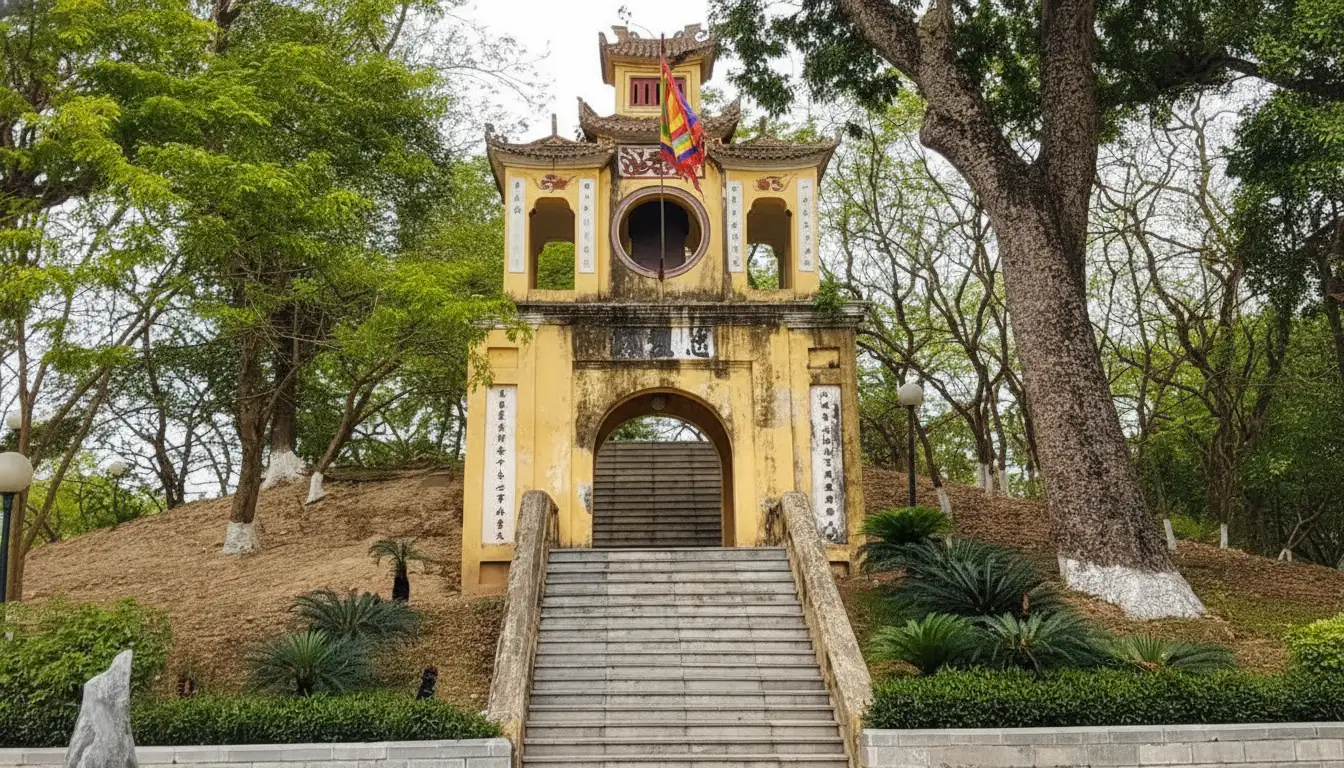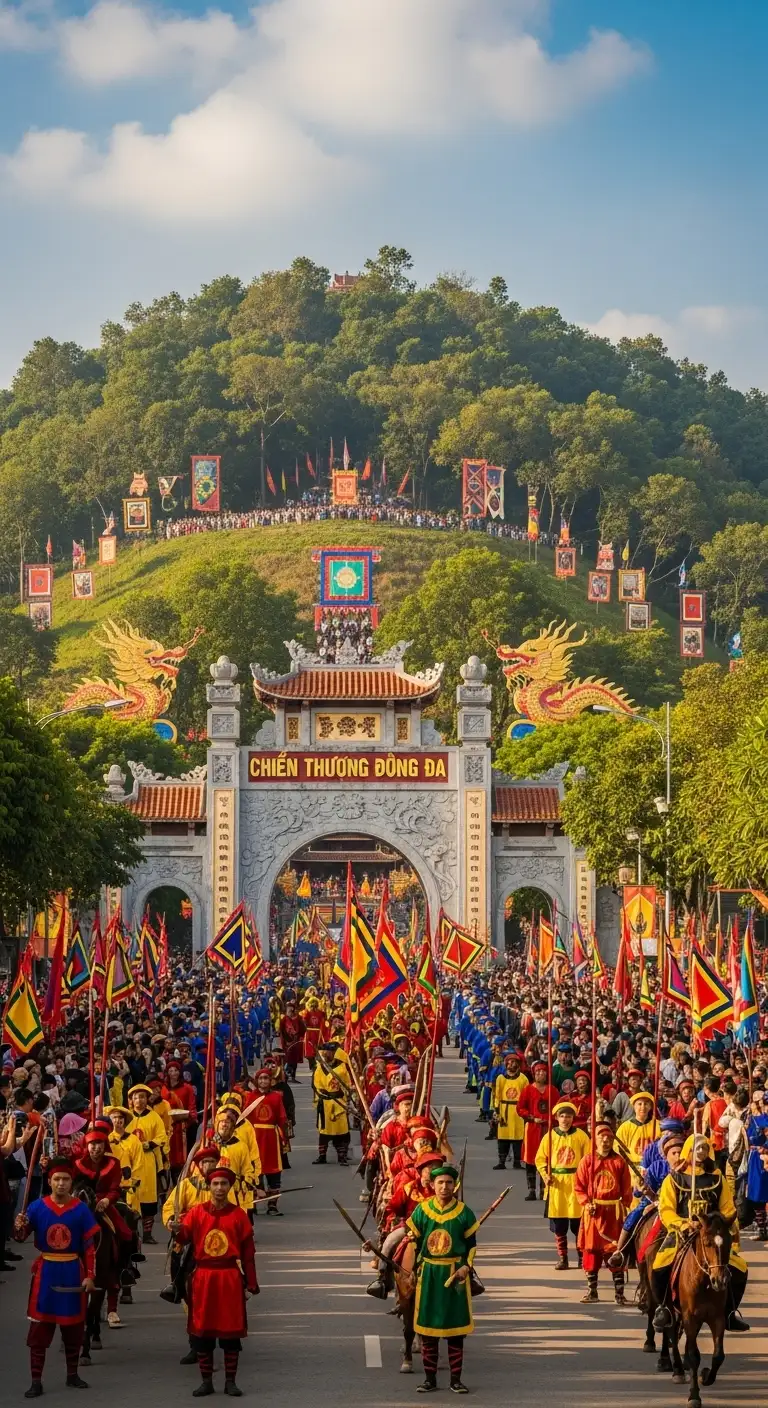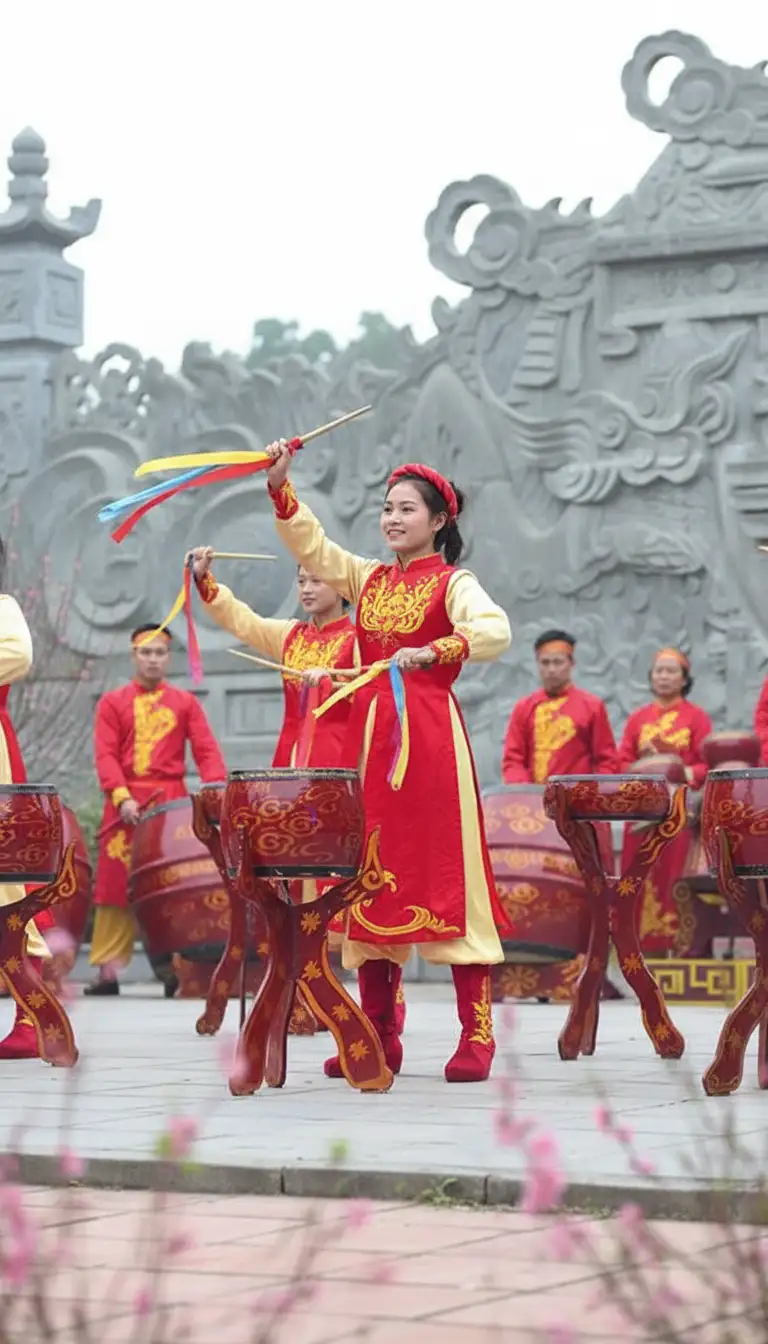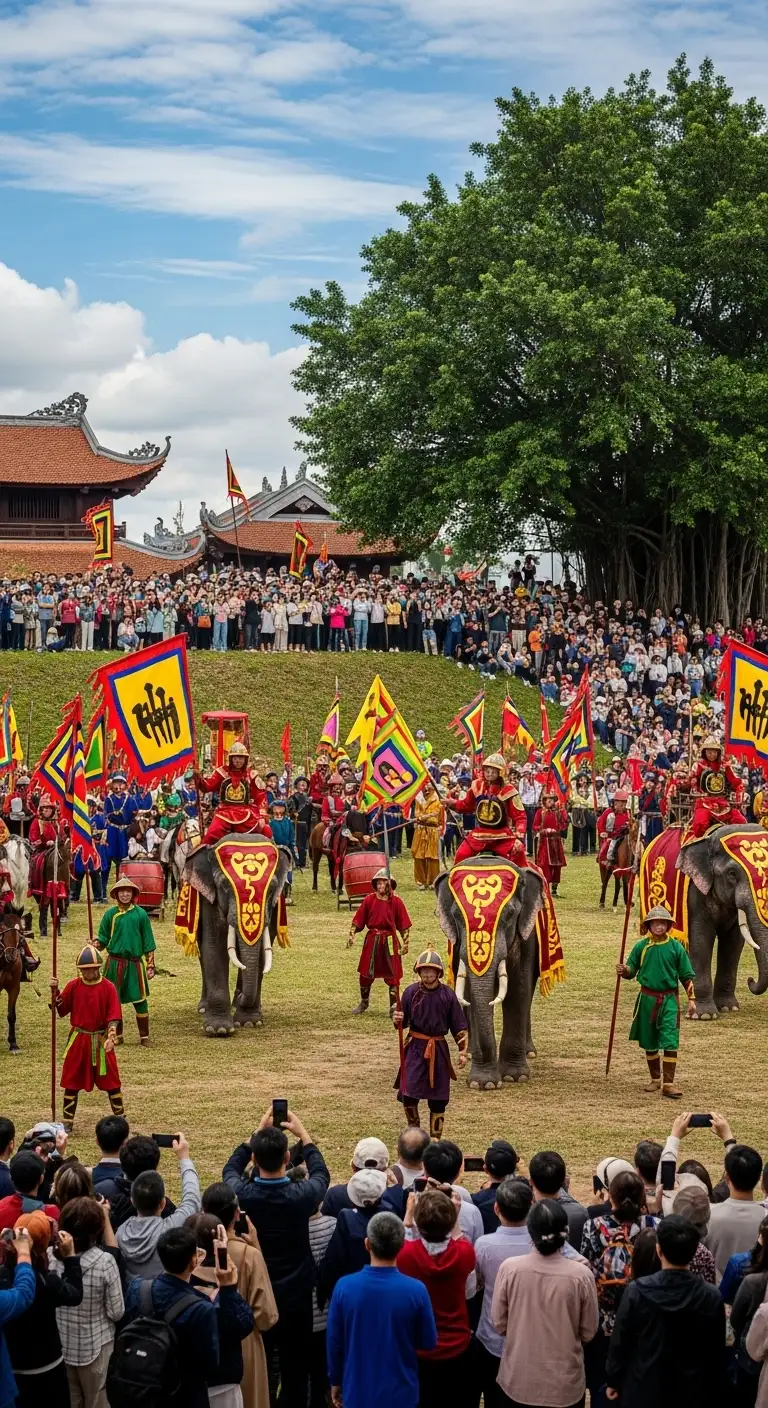Quick Facts
| Data Field (Title) | Content | Icon/Note |
|---|---|---|
| Official Vietnamese Name | Lễ hội Gò Đống Đa | Often called the Đống Đa Battle Anniversary. |
| Location | Đống Đa Cultural Park, Đống Đa District, Hanoi, Vietnam. | Site of the historic victory. |
| Date | 5th day of the 1st Lunar Month | Occurs immediately after Tết (Lunar New Year). |
| Significance | Commemorates the Ngọc Hồi – Đống Đa Victory in 1789, one of Vietnam's greatest military triumphs. | Celebrates national hero Emperor Quang Trung (Nguyễn Huệ) and the Tây Sơn dynasty's defeat of the Qing invaders. |
| Focus | Historical reenactment, martial arts, spiritual offerings, and national pride. |
I. Overview and Historical Importance
Celebrating National Heroism
The Lễ hội Gò Đống Đa is one of Hanoi’s most significant cultural and historical festivals. Held annually on the 5th day of the first lunar month, it commemorates the astonishing Ngọc Hồi – Đống Đa Victory of 1789, where the Vietnamese Tây Sơn army, led by Emperor Quang Trung (Nguyễn Huệ), decisively defeated the much larger Qing (Chinese) invading forces.
This victory is celebrated as a defining moment in Vietnamese history, showcasing the nation’s fierce spirit of independence and military genius. The festival serves as a powerful reminder of national resilience and the sacrifices made to protect the country’s sovereignty.
The Significance of Đống Đa Mound
The festival takes place at Đống Đa Mound (Gò Đống Đa), a historic hill in the center of Hanoi. The name Đống Đa is literally translated as “Heap of Banyan Trees,” referring to the massive burial mounds created after the battle to inter the fallen Qing soldiers. The site is a somber yet proud testament to the fierce fighting that occurred here.
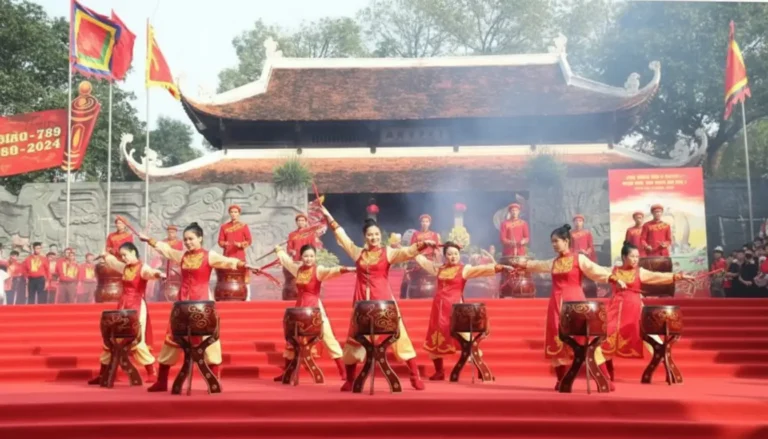
II. Festival Activities
The festival blends solemn ceremonies with vibrant cultural performances that bring the heroic past to life.
1. Ceremonial Rites (Phần Lễ)
The ceremonial part focuses on honoring the heroes and spirits of the battle:
Incense Offering: A grand ceremony is held at the temple dedicated to the Emperor and his generals, where leaders and citizens offer incense and prayers in gratitude for the victory.
Solemn Procession: A respectful procession begins at the Quang Trung Statue in the park, moving towards the main mound, often accompanied by the rhythmic beat of war drums and traditional music.
2. The Battle Reenactment (Phần Hội)
The most dramatic and anticipated part of the festival is the vibrant theatrical reenactment of the victory:
Triumphant March: Participants dress in the colorful, symbolic uniforms of the Tây Sơn army, re-enacting the rapid march and surprise attack that led to the Qing defeat.
Traditional Performances: The air is filled with martial arts demonstrations, traditional games, and performances that evoke the spirit of the battle and the subsequent victorious return to the capital, Thăng Long (old Hanoi).
The Fire Dragon Dance: A special “Fire Dragon” or “Fire-shaped Dragon” dance is often performed, symbolizing the great military fire that Emperor Quang Trung used to launch his surprise attack on the enemy on the night of the Lunar New Year.
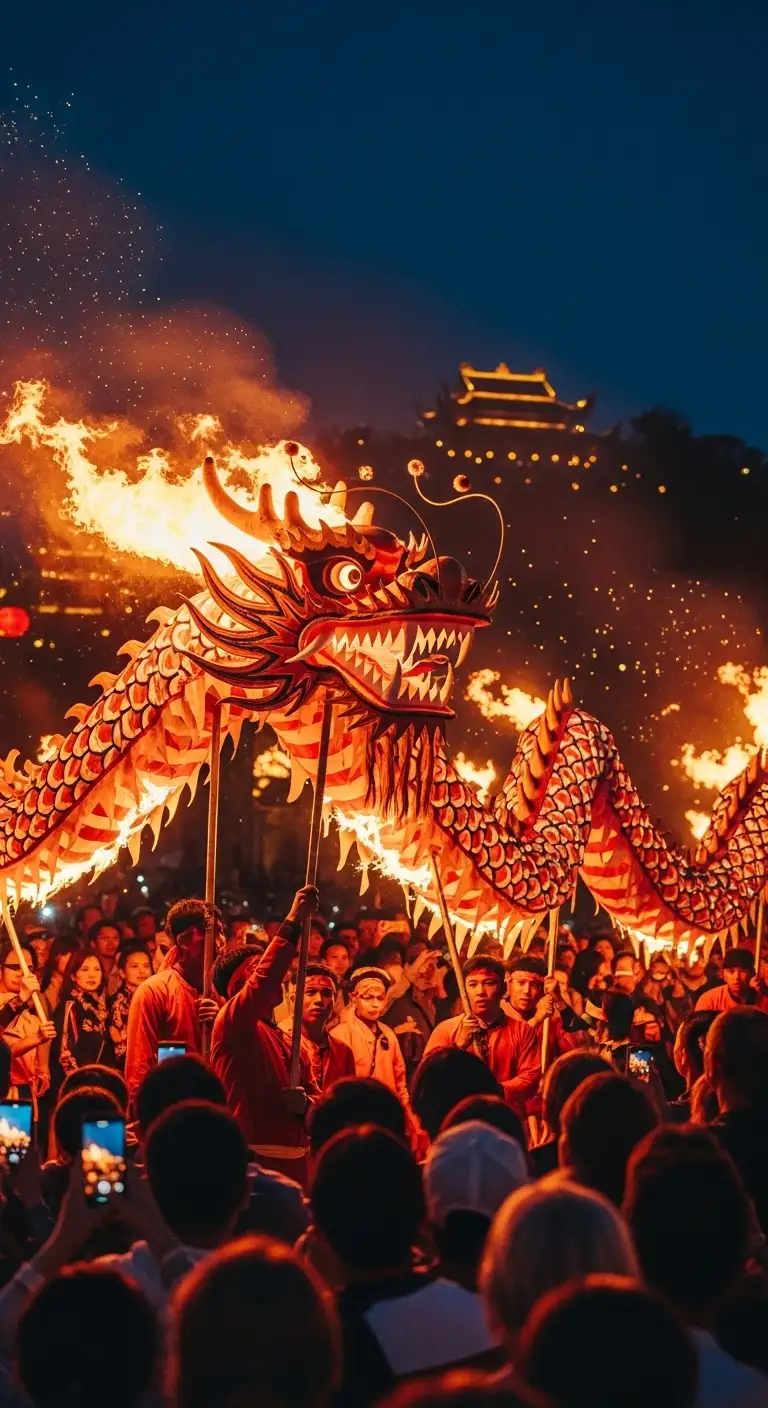
III. Visitor Experience
The Gò Đống Đa Festival offers international visitors a unique window into Vietnam’s long-held tradition of honoring its past and celebrating its national heroes. It is an opportunity to witness Vietnamese patriotism and cultural pride firsthand.
Best Time to Visit: The opening ceremony and the historical reenactment, usually held in the morning on the 5th day, are the most engaging activities.
Atmosphere: Expect large crowds, vibrant energy, and a palpable sense of historical reverence.
